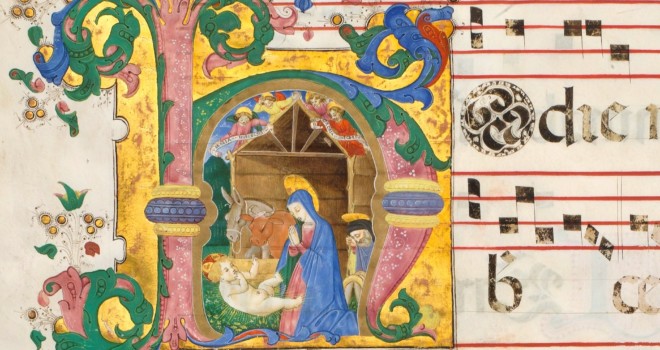A colleague mentioned hearing “White Christmas” or “Here’s Wishing You a Merry Christmas” in Japanese during Christmastide. This is seasonal music popular among those who generally do not believe in what Christmas stands for.
Similarly, during my European years, I was struck by the different cultural expressions surrounding Christmas among those who did historically hold it. My Australian friends celebrate Christmas during the height of summer, a practice that makes our external symbols — snow, ice, bare trees — seem irrelevant. The early American Puritans suppressed Christmas on anti-papist grounds. Just what Christmas might mean in a Muslim culture, where its doctrine is heresy, or in a Hindu world, is anybody’s guess.
I have always liked “White Christmas.” But clearly, “White Christmas,” even with Bing Crosby, is a deflection from what Christmas is. It is a confusion of atmosphere with substance. We now think twice about wishing our neighbor “Merry Christmas” lest we “impose” our beliefs on the poor man. Whatever it is that our heads are full of, we do not want anyone to find out lest he be upset by a real idea. The ultimate defense against truth is the refusal to know.
“Adeste Fideles” is glorious and memorable. But one is hard-pressed to imagine what these words and music might mean to someone theologically clueless or metaphysically antagonistic to the truths contained in the hymn. I can, to some extent, enjoy a Wagner opera without following the German, but, as with “Adeste Fideles,” I should know what it means.
Any
great theological truth or any event as great as the birth of Christ causes
profound and unending reflection on what it means. We can express our understanding
in terms of poetry, music, dance, essays, treatises, or hymns. Truth breeds
truth, along with multiple ways of expressing it or coming to terms with it.
Christmas in the United States in recent years is being
driven indoors. Someone is ever “offended” by any public display of it. The
reason for offense is that Christmas is a doctrine proposed to be true, not
just that the music celebrating it is beautiful. We did not make its truth up.
What Christmas is remains true whether we succeed in expressing it culturally
or not, though it is our natural thrust to embody it in diverse ways.
Christmas is, of course, the great family feast that, as
Chesterton said, should be celebrated indoors, with those we love and those
who love us. But we come back to the question: “What does Christmas mean?” We
should not lose this understanding contained in the tradition or refuse to face
its implications because we do not want to hear it.
Christmas
is a truth about God. Its initiative does not come from man.
Briefly, it affirms that the world did not make itself to be what it is. Before the world is “I AM” (Exod. 3:14). It turns out that the Godhead has its own proper inner life, complete in itself, having no need of the world or us.
However, for His own purposes, God created the world,
within which and for His purposes exists a central, free creature, the human
being. This being, each of its existing members in time, is intended to
participate in the inner life of God. God created a world in which He could be
rejected by the free creature. He was, in fact, rejected.
God’s response to this rejection was to send into the
world His Son, the Eternal Word, who was born of Mary in Bethlehem during the
reign of Caesar Augustus. This Incarnation, as it is called, this birth, life,
and death of Christ, is the central event of human history and explains it.
When we celebrate Christmas, this is what we celebrate, that Christ is true God
and true man.
Understanding
this, everything else makes sense.
Not understanding it, little else does.
✠














